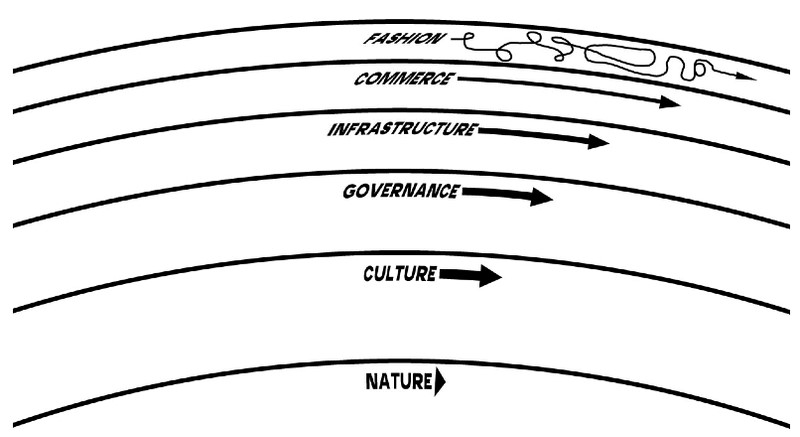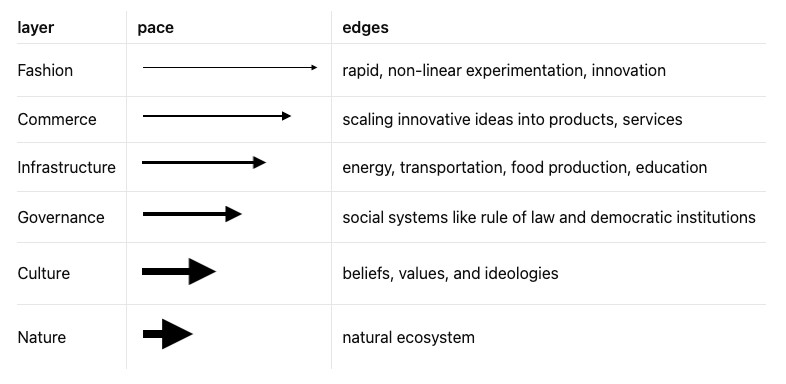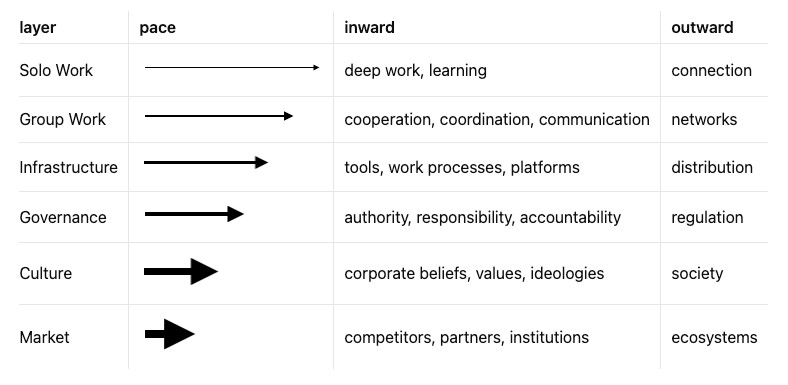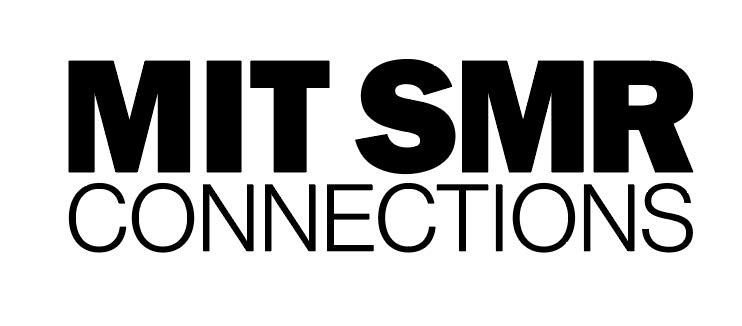How we pace our work permeates—and changes—work culture
“Every form of civilization is a wise equilibrium between firm substructure and soaring liberty.” – Eugen Rosenstock
The Covid-19 pandemic has led to a reappraisal of nearly everything related to work. It’s the elephant in the room even when talking about topics nominally unrelated to the specific pressures Covid-19 imposed on us as individuals and organizations. As a result, it’s nearly impossible to explore an individual theme like ‘How we pace our work permeates—and changes—work culture’ without the pandemic framing the theme. After all, the pandemic has shattered the status quo ante, and can’t be ignored: it is a lens through which everything must be viewed, for now… and perhaps the defining rationale for a new, dramatically reconsidered way of work.
Others have observed that the pre-pandemic workplace was no Garden of Eden, and worker reluctance to return to the office is not limited to health concerns related to Covid. There were cultural gaps of long-standing that have been made more evident in the current time of disruption, such as the need for purpose, #MeToo, and issues like diversity and inclusion. Now that we’ve experienced across the board disruption, we need to anticipate the widespread desire for systemic change in the world of business.
In this article, Toward A Working Equilibrium, I will pursue the specific premise that seemingly small shifts in the way we as individuals and teams do our work could lead to foundational changes in business culture. That change? Moving to downplay real time/face time communication in favor of asynchronous forms of communication.
Asynchronous communication has been getting a lot of attention in recent years, driven in part by highly vocal advocates extolling ‘asynch’ as a way to get more done, waste less time, and free up our calendars from seemingly endless meetings, video fatigue and the ‘fear of missing out’ (FOMO) that chat tools tend to cause. Also, there is a growing body of scientific research supporting these views. For example, there’s mounting proof that team decision-making is significantly improved by alternating group discussion with individual time researching the issues.
Before expanding on specifics like that example, let’s ask two core questions: how do organizations change, and why does it take so long?
Time and Change
Work is a complex system, a messy socioeconomic tangle of the myriad threads making up all business organizations, not any sort of simple machinery. The trouble with complex systems is that they are difficult to model—or to understand—because of the interdependencies between the many parts; the hard-to-fathom relationships where different elements in a complex system can compete, collide, cooperate, and learn with each other, many times with unpredictable results.
How then to productively think about work to gain insight into the differences along the dimension from asynchronous to synchronous work without confusion?
According to the Oxford English Dictionary, the most commonly used noun in English is “time.”
Stewart Brand and Pace Layers
The brilliant Stewart Brand revealed a way to understand how civilizations (and other complex systems) change over time, responding to shocks and adapting…or not adapting, and thereby collapsing. He focused on a model he called Pace Layers, where different parts of a ‘civilization’ can be visualized arrayed from the fastest to the slowest. (This is one of his depictions, and the caption is his as well.)

Brand describes pace layers in this way:
“Each layer is functionally different from the others and operates somewhat independently, but each layer influences and responds to the layers closest to it in a way that makes the whole system resilient.
“From the fastest layers to the slowest layers in the system, the relationship can be described as follows:
“Fast learns, slow remembers. Fast proposes, slow disposes. Fast is discontinuous, slow is continuous. Fast and small instructs slow and big by accrued innovation and by occasional revolution. Slow and big controls small and fast by constraint and constancy. Fast gets all our attention, slow has all the power.” – Stewart Brand

Any two adjacent layers have a faster layer above and a slower, below. The faster layer can be thought of as imparting a tug on the slower, and the slower drags on the faster: each influences the other to a degree related to the differences in pace between the two. If the faster is going very fast, the tug on the slower is greater, speeding up the slower, and vice versa. Innovations at the top percolated down to lower layers, but the compounding of friction at every level downward means that fashion can have an impact on culture, but it may take decades. This is partly due to the friction of layers, but also the increasing scale as we move down the tiers. The culture of any civilization includes all its people, while innovation in the commerce layer—the iPhone, say—may initially involve only a small set of early adopters, and even decades later, many still haven’t bought one. At the same time, the iPhone has percolated downward for decades and changed the underlying culture profoundly.
Below, I have tried a transposition of the elements of Brand’s model into the world of work, a microcosm of his vision.

I have changed the table slightly, adding a distinction between the inward-centered and the outward focuses of each layer.
Zeroing in on Layers
In solo work, the inward focus is the individual work itself and learning while doing it. Meanwhile, the individual has a second, outward focus of connecting with others, and transitioning the results of solo work into the group context. The individual’s experiences and knowledge have an impact downward on the group work tier, as when a member of a group introduces new thinking or insights about their own work, and it spreads down into the groups—the networks—in which they participate.
Groups employ cooperation, coordination, and communication to align and perform, and their outward focus is providing services or products to others: the dimension of commerce.
That group innovation is the way that new tools and processes find their toehold in an organization, and if widely adopted become part of the infrastructure, and spread out across the organization’s networks, and across divisional or corporate boundaries to the supply-chain: partners, customers, and suppliers become exposed to new ways of doing things and may adopt them in turn.
Conway’s Law bears on the interactions between governance and culture layers:
“Any organization that designs a system (defined broadly) will produce a design whose structure is a copy of the organization’s communication structure.” – Melvin E. Conway
This insight is based on the pressure of the governance layer on infrastructure, but there is a reflexive impact as well since the adoption of new tools and processes has a slow transformative impact on governance. Witness the reengineering craze of the 90s based on the adoption of email across corporations. Note also that businesses come in contact with the regulatory context for the first time at the governance level.
The lowers layers are similar to those of Brand’s model but transposed and reformed to the scale of businesses and markets, rather than societies and natural ecosystems.
About Culture and Markets
Work culture is often discussed in the world of management as a product of management design and implementation. It is commonplace for entrepreneurs to describe their company’s culture as a product, a resource that has been crafted, and one that can be employed as a competitive advantage, like intellectual property or brand awareness. However, much of what makes up the culture of many modern businesses is shared across markets. That’s why we can take a job at Ford after working for McKinsey and understand how things generally work. It’s not like switching your language from Mandarin to Finnish. And people do change jobs and take cultural norms and business practices from one company to the next, cross-pollinating them. The best ideas spread the fastest, and as Brand said: fast learns, and slow remembers. Successful ideas percolate downward into the core, into the culture, and then are learned by new hires as they come aboard.
What is clear is that cultures—in civilizations and businesses—change relatively slowly. Cultures are insulated from the rapid fluctuations of upper pace layers, the difficulties involved in changing infrastructure, and the innate conservatism of governance. Likewise, the even more ponderous underlayers of markets/nature act as a drag—as an arbiter of continuity—underneath cultures.
Markets are the complex playing fields where companies compete and cooperate, and markets have their own slower pace than those of individual companies, and naturally impart greater continuity than individual companies do. They play a role analogous to that of the ecosystem in Brand’s model but are still in fact embedded in the systems of nature, at their base.
How Will Changing Pace Change Culture?
In one sense, Pace Layers is just a model, a tool to help us conceptualize and gain insight into the dynamics of complex social systems. However, there is a strong case to be made that this model is a good proxy for how the world actually works, and in that regard thinking and acting as if Pace Layers are real makes sense. Or put another way, if your goal is to make changes to a civilization or a business culture, there has to be a cascade of acceptance at the higher, faster levels to influence the beliefs and values at the cultural level.
There may be a nearly perfect alignment of one class of change with the workings of Pace Layers: changes of pace at the higher levels—where individuals communicate and coordinate, where new practices are tested and dispersed across social networks—that sort of change could have an inside track to influencing layers lower down.
Adherents of other possible innovations in business can make arguments in favor of greater work/life balance, finding purpose and belonging at work, or greater degrees of diversity and inclusion, as only a few examples. I am not arguing that these aren’t desirable or even of greater urgency, and nothing is stopping us from making changes in many aspects of work culture in parallel. We are not limited to one change at a time.
But changing the pace of how we work—in particular, extricating deep solitary work from the constraints of real time/face time communication—holds the promise of a potentially foundational change in work culture, and changing pace may be the fastest and surest route to outpacing change.





